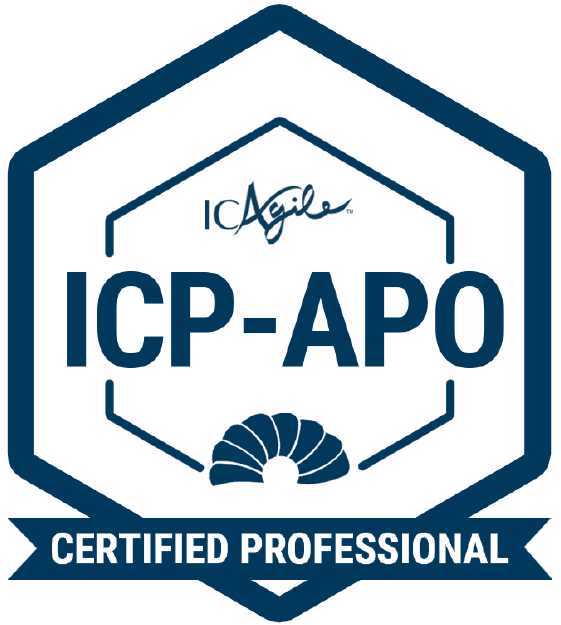Overview
The Lean and Agile mindsets and their practices give the Business Analyst new and powerful tools for quickly determining precisely what to build. Traditional system-development methodologies are just not responsive enough to the ever increasing pace of change. Building a system based on yesterday’s needs is not a success even if delivered on time and on budget. This indispensable course explores the critical need for good requirements development in an Agile environment and equips business analysts with the critical thinking, analytical skills, and necessary people skills they need to add value to every Agile project.
This practical workshop provides participants with an understanding of the changing role of the business analyst as a co-creator of requirements rather than as an order taker. Participants learn the tools and techniques best suited to Agile, and the timing for performing key tasks and events. Explanatory, demonstrations, and practice exercises will provide you with the experience needed to create user stories that meet business needs.
The International Consortium for Agile has worked with experts around the world to develop an education roadmap of training and certification for all specialties involved in Agile development. This course has been approved and earns students the ICAgile Certified Professional in Business Value Analysis designation upon successful completion of the course.
Completion of this workshop satisfies part of the requirements for IC-Agile’s ICP-APO certification.

Successfully complete an ICAgile accredited course taught by an ICAgile Authorized Instructor.
ICAgile Authorized Instructors can withhold certifications based on lack of participation or understanding of course learning objectives.
GSA: $1185 USD
14 PDUs
Next Upcoming Course


Train up your teams with private group training
Have a group of 5 or more students? Cprime also provides specialist private training with exclusive discounts for tailored, high-impact learning.
Business Analysis in Agile Projects (ICP-APO) Schedule
Full Course Details
Part 1: Getting Started
As we get started we will get to know each other and understand the objectives of the course. We will introduce the importance of Conversation in the Agile environment and how the Conversation can be managed for better communication and results. We will model the creation of Working Agreements that contribute to building trust on a team.
- Introductions
- Course Objectives
- Impact of other Domains on Agile Beginnings
- The Agile Conversation
- Working Agreements
Part 2: Agile Overview
You’ve heard it all before: “Agile means developing software without any documentation. Agile means developers decide on a product’s features. Agile is the same thing as Scrum.” Perhaps you’ve heard the most misleading concept of all: “Agile means we don’t do business analysis anymore.” Nothing could be more false.
Learn what Agile really is, what the variations and hybrids of Agile are, and how business analysis is critical to project success.
- Lean Beginnings
- Why Agile?
- Agile Manifesto & Principles
- Agile Practices
Part 3: Building an Agile Team
In Agile the Business Analyst has various possible roles from Voice of the Customer or Product Owner, member of the Customer side team, or member of the Development side team. In this section, we will explore how to create an effective Agile team with an Agile mindset and then see how the Business Analyst fits into this team framework and provides value.
- The Team as a System
- The Business Analyst
Part 4: Project Initiation
Agile follows an Adaptive, Just-in-Time planning model. In this section, we will learn how Adaptive Planning can better meet the customer’s needs and provide them more value with fewer resources by only elaborating requirements Just-in-Time.
- Five Levels of Planning
- Vision
- Themes & Roadmap
- User Roles and Personas
Part 5: Backlog Planning
The Agile vehicle of communicating requirements is the User Story. The Business Analyst is central in the process of writing and elaborating User Stories. This section will help the Business Analyst learn about User Stories and how to write and elaborate good User Stories.
- The Product Backlog
- Writing User Stories
- Guidelines for Good Stories
- Acceptance Criteria
Part 6: Managing the Backlog
After User Stories are written, they need to be prioritized and estimated. As part of the Customer side team, the BA has a major role in prioritization. As a member of the Development side team, the BA will contribute to User Story estimation. Both of these come with low cost, low waste techniques that allow us to do this quickly and get on to the important work of implementing requirements.
- Prioritization
- Estimating
Part 7: Release Planning
The Business needs to know when they will receive product deliverables. In this section, the Business Analyst will learn how milestones are set and how deliverables will be slated for a release with high confidence in meeting dates.
Part 8: Backlog Refinement
Backlog Refinement is where the Business Analyst is really worth their weight in gold. User Stories represent very thin statements of Customer wants and needs but they don’t contain the details until the development team is close to working on them. As the time to work on them approaches, the details need to be filled in and the Business Analyst is the central figure in requirements elaboration.
- Agile Documentation
- Requirements Elaboration
Part 9: The Iteration
When Requirements are ready to go – ready to go does not mean mountains of documentation. Much of the details are maintained as tacit knowledge with the Business Analyst and the others who have been involved with the Conversation. Continued collaboration is essential to turning what we’ve learned about the needs of the customer into working software. The Business Analyst is always there involved in answering real-time questions from the team.
- Iteration Planning
- Iteration Execution
Part 10: Inspect and Adapt
Agile is an Empirical Process for developing complex software. Essential to an Empirical Process is feedback loops. Feedback loops can be both formal and more informal. In this section, we will learn about the formal feedback loops that are built into the end-of-iteration timeframe for driving continuous improvement back into the process.
- The Iteration Review
- The Demo
- The Retrospective
Part 11: Agile Adoption
So you want to drive these concepts into your organization as you leave the class and go back to your work. This section will help you do that effectively.
If you're involved at all with Agile projects or you want to learn more about how to incorporate Agile approaches into your projects, you simply must participate in this workshop.
Professionals who may benefit include:
- Business customer, user, or partner
- Project Sponsor or Project Owner
- Business Analyst
- Business Systems Analyst
- Systems Analyst
- Project Manager
- Systems Architect or Designer
- Systems or Application Developer
- QA Professional
- Systems Tester
- Leader of Systems projects or teams
- Anyone wanting to enhance their Agile business analysis skills
- Describe the economic benefits of lean and agile mindsets.
- Explain the various agile frameworks and practices for realizing agile benefits.
- Explain how the Business Analysts engage with an Agile Team
- Use agile practices to bolster analysis practices to deliver great value to stakeholders
- Use agile’s fast learning cycles to incrementally delivery value, discover what is really valuable to our stakeholders, and incorporate that learning into subsequent analysis
- Explain the different ways a BA engages with an Agile Team
- Use “just enough” modeling and “just enough” documentation to drive rapid learning.
- User various splitting techniques for refining large backlog items into stories a team can quickly and incrementally deliver
- Collaborate with the agile team to write user stories and refine the backlog
- Use the retrospective to improve the ways of working and value delivery.
Although there is not an ICAgile official exam, ICAgile allows for their course accreditors to determine appropriate means for retention of the learning outcomes. Depending on your provider, there may be some type of assessment in order to earn certification.
Many providers assess via participation, activity and understanding conveyed via exercises and discussion, withholding certification when appropriate.
